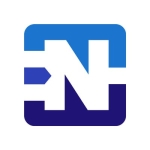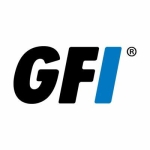This solution does everything and anything a firewall can do.
I am tempted to say that all of the features are valuable.
When you choose a firewall you have to make a strategic decision, much more than a tactical one. We decided that everything we use within it, goes through and it's got protection.
The dashboard is intuitive and user-friendly.
Training on the devices is an area that needs improvement. Their training mechanisms are not perfect, and this is where you lose a good appreciation of the product.
The documentation for implementation is not good. For example, when you look up the details on a firewall rule to validate it, the details are not there.
If you click on the help file, they say a zone is an area where you can define specific logical network areas. This is where they stop, with nothing more. If you want to go further into the concept of it, which you know there is, you have nothing. Then you have to revert to the internet and go onto newsgroups to try to see if anybody has had your type of experience. Then you find someone, they explain it to you then say, "Oh, it only makes sense". So, then when you want to implement this, it's much easier at that time. So, that's the best-case scenario that I can explain.
There is an area that is very specific to our setup, where working tools you cannot easily establish a VPN between two internal networks.
When you want to establish a VPN with different wizards, they assume that you're always going through your internet link.
If you want to create, with the zero-trust concept, which is where you don't trust anybody or any device, you want to make sure that everything on your network is segmented and everything is relative, depending on its flexibility, behind its firewall or a firewall segment. At some points, you might want to establish VPNs between certain network segments.
Since you cannot establish VPN tunnels from the Sophos interfaces, plus if you are doing something that's going through the internet, then you lose flexibility.
Currently, let's say we have a factory V-LAN and you don't want anybody within the factory V-LAN to be able to connect to another unless it is to a specific V-LAN, and you want to use VPN technology, you can't do it because you can't establish the connection again between two internal interfaces.
I have been working with Sophos XG for six years.
In regards to scalability, it's difficult to ascertain at this time because we haven't scaled it necessarily.
The use cases that we have are very particular, and we're not in a mode of having scaled it yet. We have approximately 100 users in our organization who are using Sophos XG.
Their support, we have a mixed review of it. It's good, but where it's bad, is because they're an international company that relies on many different continents to be able to get the support at different levels.
When we get into the people that are from India, that's where the support becomes not as efficient as we would want it to be. They have different rules of operating under and they don't show themselves to be flexible. Whereas where I am, currently I'm in Canada. When I speak to the support people within Canada, they're much more flexible when it comes to trying to follow us up on what we're trying to do and get the thing working. They're more flexible.
It was a combination of 75 percent straightforward and 25 percent complicated.
It's approximately $6,000 for each device. We have three devices and it was somewhere around $18,000.
I would recommend Sophos XG to others who are interested in using it.
I would rate this solution an eight out of ten.
















